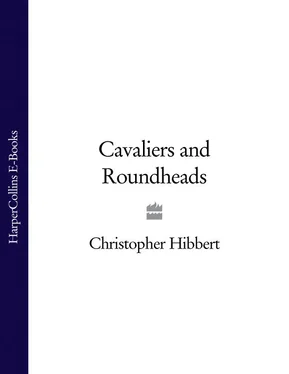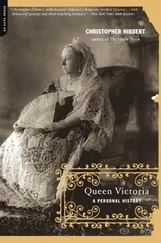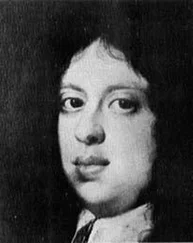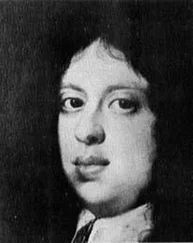Her first baby died within an hour of its christening; but the mother soon recovered and her husband was so kind and considerate that she felt not only ‘the happiest princess’, but ‘the happiest woman in the world’. A few months later she was pregnant again, with a pre-natal craving for shellfish. The baby, born on 29 May 1630,. another boy, was big and healthy. He was christened Charles. Other children followed him with the most satisfying regularity, a princess, Mary, the next year; another son, Prince James, in 1633; a second daughter, Princess Elizabeth in 1635; then a third daughter in 1636; and a third son in 1640. They were all healthy children, and their mother, her years of unhappiness now far behind her, settled down to a life of full contentment. Year by year the King’s affection for her deepened; and her influence over him was to have the most fateful consequences in the future. He made no public protest when various people at court were converted to Roman Catholicism under her influence, nor when she took her two elder sons to mass. Edward Hyde, later first Earl of Clarendon, then a successful young lawyer who was to know them both well, observed, ‘the King’s affection to the Queen was of a very extraordinary alloy; a composition of conscience and love and generosity and gratitude…insomuch as he saw with her eyes and determined by her judgement.’
The country being at peace, the King was able to pay his way without the necessity of calling Parliament, resorting to all manner of devices for raising money – some of doubtful legality, all of them unpopular – for the ordinary costs of government. Customs duties were collected as of right; obsolete laws were resurrected to extract money from those who had breached their provisions; Crown lands were managed with the utmost severity, and royal forests extended; monopolies were sold to companies and corporations since the law forbade their sale to individuals; fines were imposed upon all owners of freehold land worth £40 a year or more who had not applied for knighthood at the King’s coronation; and Ship Money, a tax which had been levied by ancient right upon maritime towns and counties to meet naval expenses, was extended to inland areas also.
As in the past when advised by Buckingham, the King was not so widely blamed for these impositions as were his ministers and advisers, in particular Thomas Wentworth, the future Earl of Strafford, and William Laud, who was appointed Archbishop of Canterbury in 1633, the one a hard, intelligent, impatient and energetic man, the son of an ancient family and owner of huge estates in Yorkshire, whose great wealth had been increased by none too scrupulous methods, the other the son of a Reading clothier, a ‘little low red-faced man of mean parentage’, in Sir Simonds D’Ewes’ description. Overworked, fussy, unimaginative and outspoken, sometimes irritable and often rude, William Laud had made many enemies. He was scholarly and devout, withdrawing seven times a day, however pressing his business, to kneel in prayer; yet those who had seen the eyes in his alert, flushed face flash with sudden and alarming anger, who had been shouted down by him in argument, who had suffered at his hands in the Star Chamber or in the Court of High Commission, had good cause to fear and dislike him.
To him Puritans were like wolves ‘to be held by the ears’; and, while introducing measures which effectively reduced the number of those who propounded what he took to be their heretical doctrines, he appointed to vacant sees bishops who were prepared to endorse his own and the King’s views on conformity, the use of the Prayer Book, surplices and organs, the proper position of the communion table as an altar at the east end of the church rather than as a mere slab of wood in the middle, the need to make services more reverent and churches more beautiful. ‘It is called superstition nowadays’, he once indignantly complained, ‘for any man to come with more reverence into a church than a tinker and a dog into an ale-house.’
Very insular in his outlook, he set great store by the Englishness of the established Church which was beginning to be called Anglican, the Church which had kept itself free from the deviations of the medieval popes, which remained the true Church of Christendom, which must be steered in that ‘middle way’, as the King described it, ‘between the pomp of superstitious tyranny and the meanness of fantastick anarchy’.
This view of the meaning and importance of the English Church offended both Catholic and Puritan, yet it could not be said that the jointly held views of the King and Archbishop were imposed upon a wholly antagonistic people: there was much in ‘Laudism’, and not only its nationalistic overtones, which appealed strongly to all classes. While enemies of the established Church ranted against bishops, many parishes presented petitions in support of them and later organized demonstrations in favour of altar rails and organs. Indeed, during these eleven years when the King ruled the country without reference to Parliament, there were numerous people to be found who believed the country in general, as well as the Church in particular, was set upon a fair and encouraging course. New roads were being built and old ones improved, canals dug and swamps drained; a postal service was started; attempts were made to improve local government and to find work for the unemployed. The country was prosperous and remained at peace. Edward Hyde went so far as to suggest that in 1639 ‘England enjoyed the greatest measure of felicity it had ever known. But then,’ Hyde continued, ‘in the midst of this scene of happiness and plenty, a small, scarce discernible cloud arose in the North, which was shortly after attended with such a storm, that even rooted up the greatest and tallest cedars of [the country]; blasted all its beauty and fruitfulness; brought its strength to decay, and its glory to reproach.’
PART ONE
Конец ознакомительного фрагмента.
Текст предоставлен ООО «ЛитРес».
Прочитайте эту книгу целиком, купив полную легальную версию на ЛитРес.
Безопасно оплатить книгу можно банковской картой Visa, MasterCard, Maestro, со счета мобильного телефона, с платежного терминала, в салоне МТС или Связной, через PayPal, WebMoney, Яндекс.Деньги, QIWI Кошелек, бонусными картами или другим удобным Вам способом.










